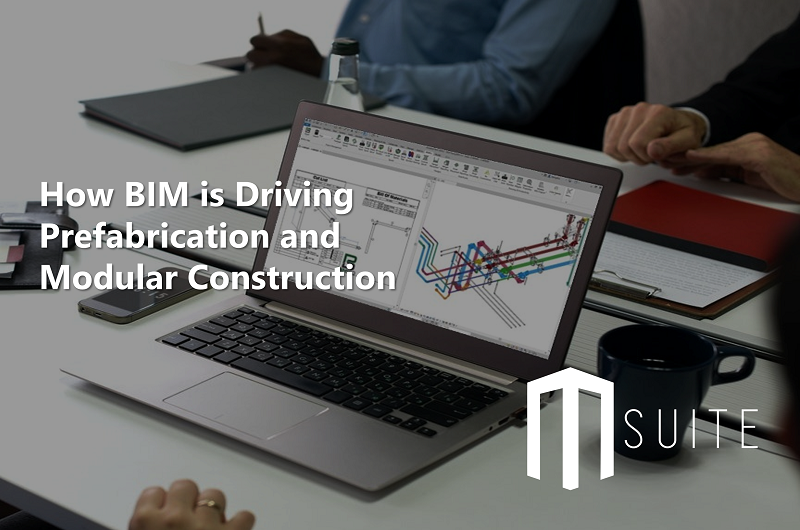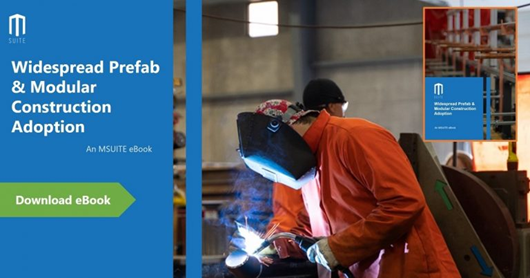For all the talk about how the trades need to implement building information modeling (BIM) processes, there are companies in the steel and MEP trades that have been using BIM since the late 1990s. A strong motivation was that the resulting detailed shop drawings and bills of materials helped automate production, and the models they created helped make the most of their coordination efforts and construction processes.
Contractors and designers began to follow the trades’ lead after 2000 when Autodesk released Revit. Since then, using primarily Revit, they have expanded their use of the BIM process, banking on selling more work with visualizations, avoiding clashes on the project through simulations, and reducing duplication of effort by fine-tuning coordination among project stakeholders.
Dodge Data & Analytics Report
The most recent Dodge Data & Analytics SmartMarket Report on prefabrication and modular construction surveyed architects, engineers, general contractors, contract managers, and trade contractors. Many participants responded that they use BIM processes on at least some of their prefabrication and modular projects. But an impressive one-third of responding specialty/trade subcontractors are using the BIM process for modular construction at a high or very high level. This makes them the most profoundly BIM-engaged sector in the construction industry. In addition, 59% plan to use BIM at a high or very high level by 2023. Only 12% of respondents utilizing modular processes are not using a BIM process, while over 50% utilize BIM on greater than half of their projects.
Nearly half of trade contractors report the most significant obstacle in the potential use of modular is that the owner has no interest in it. Some of the other challenges to using BIM on modular projects that trade contractors reportedly face include unsuitable project delivery method (33%), project types that don’t apply (29%), and unavailable component manufacturers (23%). Very few (8%) consider quality or cost as problems for increasing their use of modular processes.
The top reasons cited by trade contractors that prompt them to increase BIM-driven modular construction processes are:
- Improved schedule performance (54%)
- Improved coordination (41%)
- Reduced onsite rework (39%)
- Improved cost performance (35%)
- Contractor demand (30%)
The Report indicated that schedule performance is the top reason companies will increase their use of BIM processes in modular construction.
Read the eBook: Widespread Prefab and Modular Construction Adoption. Major growth expected for prefab and modular construction. Learn Why?
The number of companies using the BIM process for modular construction is growing. Over three-quarters of the companies responding to the survey indicate they plan to increase their BIM-driven prefabrication and modular construction to over half of their projects by next year. Not surprisingly, improved schedule, coordination, quality, and cost, plus reduced rework, are driving the interest within the construction industry.
The incredible quality, cost savings, and schedule certainty of integrating prefabrication and modular methods into commercial construction is enabling teams to track, manage, and collaborate using best practices. In addition, innovative technology such as MSUITE is critical for construction firms to achieve their prefabrication and modular goals. Read 7 Advantages of Prefab & Modular Construction to learn more.








